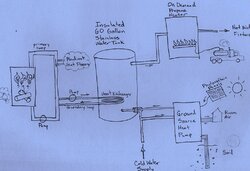I also vote for the Honeywell.
It is an antiscald valve.
Watts and Taco can work inconsistently and occasionally spike at startup with some amount of hot water passing through.
Not good when the tank is 180F.
We have used Sparco, which was bought out by Honeywell and is the AM101, etc. for about 25 years.
They have the test of time on their side.
It is an antiscald valve.
Watts and Taco can work inconsistently and occasionally spike at startup with some amount of hot water passing through.
Not good when the tank is 180F.
We have used Sparco, which was bought out by Honeywell and is the AM101, etc. for about 25 years.
They have the test of time on their side.


